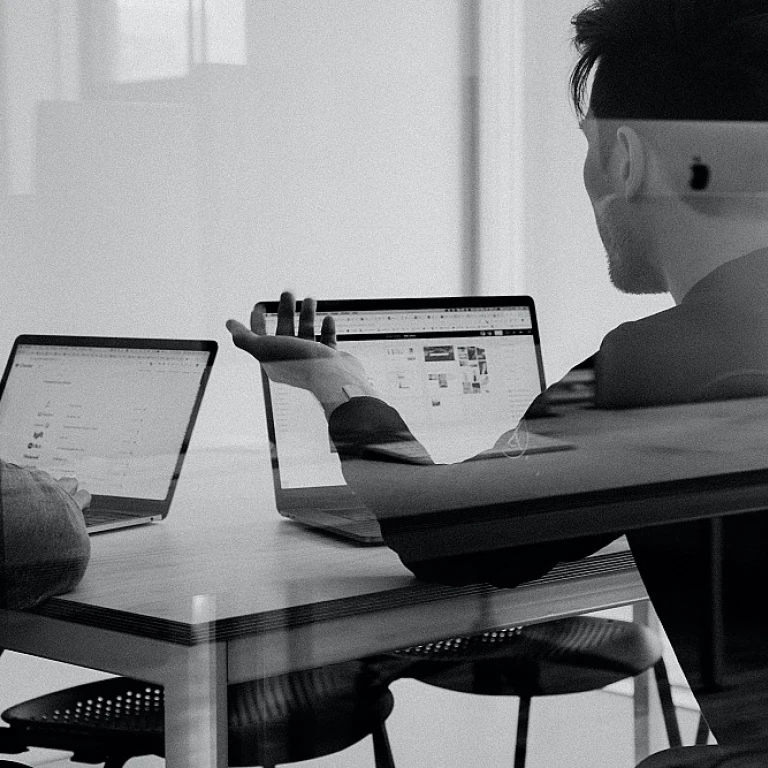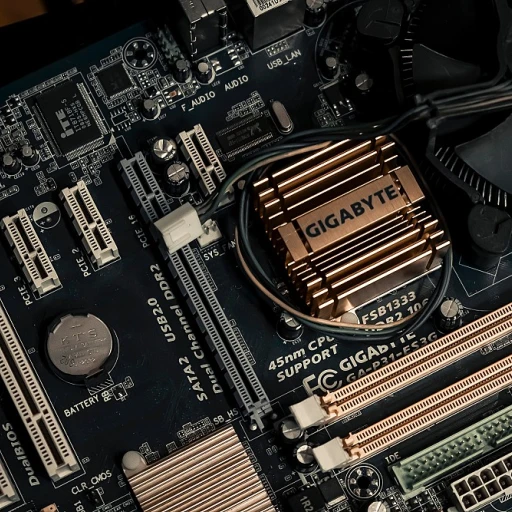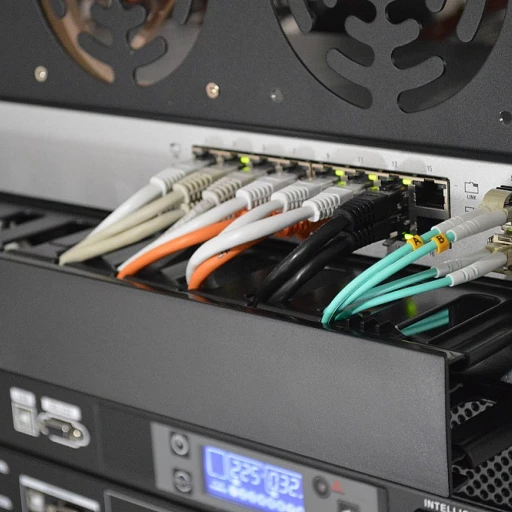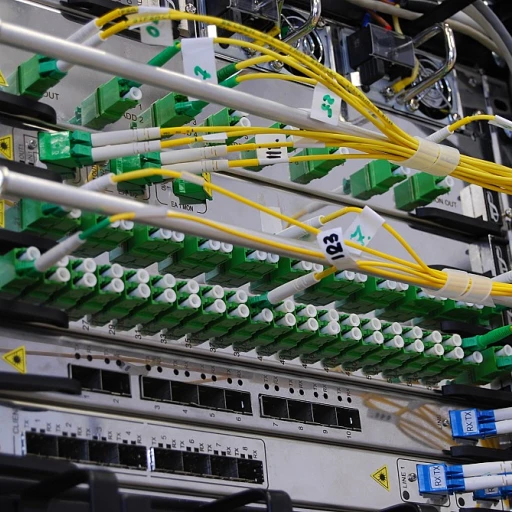
Understanding headless cms and its architecture
What's the deal with headless cms?
Alright, so you've probably heard the buzz around headless CMS, but what exactly is it? In simple terms, a headless CMS is a content management system that separates the backend (where all your content lives) from the frontend (how your content is presented to users). This separation means you can manage content without worrying about how it will look on the website, app, or any other platform. In traditional CMS setups, like WordPress or Drupal, the content and presentation layers are tightly coupled. This means the CMS controls both the storage and the display of content. But with headless CMS, you get the freedom to manage content and deliver it to any device using APIs. It's like having a content buffet that you can serve on any plate you want—be it a website, mobile app, or even an IoT device.The tech behind headless cms
The magic of headless CMS lies in its architecture. Imagine it as a decoupled CMS where the backend is the chef and the frontend is the waiter. The chef (backend) prepares the content, and the waiter (frontend) serves it to customers (users) in various ways. The chef doesn't care how the waiter serves it, as long as the content is delivered. This decoupled nature allows developers to use any frontend technology they fancy, like React, Vue, or Svelte, to create engaging digital experiences. The backend manages content storage and delivery, while the frontend focuses on user experience. This flexibility is what makes headless CMS so appealing to developers and content creators alike.Why go headless?
Going headless offers a bunch of perks. For one, it provides more flexibility and control over content delivery. You can easily manage content across multiple channels without being tied to a specific presentation layer. Plus, it enhances security since the frontend and backend are separate, reducing the risk of attacks on the entire system. Another big win is the ability to deliver content faster. With a headless CMS, you can push updates to your website, mobile apps, or IoT devices without waiting for the entire system to sync. This speed and agility are crucial in today's fast-paced digital environment. For more insights on how headless CMS is transforming content management, check out this article on hybrid headless CMS.Benefits of using headless cms for content management
Harnessing the true power of headless cms solutions
Freedom and flexibility for developers
Unlike traditional CMSs, headless CMS offers developers the freedom to create and manage content independent of its presentation layer. This decoupling enables rapid development and integration with APIs. A study by Contentful reveals that 73% of developers prefer headless CMS due to its flexibility and scalability (source: Contentful).Phil Hawksworth, a renowned developer advocate, states, “Headless CMS allows us to focus on delivering the best frontend experiences without being constrained by backend architecture” (source: Netlify).
Seamless content delivery across multiple channels
In today's digital experience landscape, consumers expect content to be delivered seamlessly across various devices and platforms. Headless CMS excels in achieving this. By utilizing APIs, content can be managed centrally and delivered to websites, mobile apps, IoT devices, and more. A report by Forrester indicates that businesses utilizing headless CMS have seen a 61% increase in user engagement and retention due to consistent multi-channel content delivery (source: Forrester).Improved security and performance
Traditional CMS platforms often come with a larger surface area for potential security vulnerabilities. By separating the backend from the frontend, headless CMS minimizes these risks. According to a report by Gartner, businesses using headless CMS have reduced security breaches by 40% compared to those using traditional systems (source: Gartner). Additionally, headless architecture ensures faster load times and better performance, as the content is served via APIs. This directly impacts user experience, reducing bounce rates and enhancing SEO metrics.Enhanced content management capabilities
Headless CMS platforms are designed with modern content needs in mind. Editorial teams benefit from intuitive interfaces that allow them to manage and publish content effortlessly without needing technical knowledge. According to a survey by Adobe, 68% of content managers reported increased efficiency and reduced time to market when using headless solutions (source: Adobe).Scalability and future-proofing your digital experience
Businesses need to scale their content strategies to keep pace with technological advancements. Headless CMS provides the scalability required to manage growing content needs and integrate emerging technologies seamlessly. AWS findings show that companies leveraging headless CMS platforms can scale their digital experiences by 55% faster compared to traditional CMS users (source: AWS).Moreover, the evolving digital landscape demands future-proof solutions. By adopting headless CMS, businesses can adapt quickly to new trends such as virtual reality, augmented reality, and IoT, ensuring their content remains relevant and engaging.By harnessing the true power of headless CMS, businesses can elevate their content management strategies, ensuring consistent, secure, and scalable digital experiences across all channels. For more insights on accessing data in Notion offline, click here.
Real-world examples of headless cms implementations
How big brands are utilizing headless cms
When you look at how some major brands are taking advantage of headless CMS, it’s clear why this technology is gaining traction. Take Amazon, for example. Amazon uses a headless CMS to manage and deliver content seamlessly across multiple channels like websites, mobile apps, and even IoT devices.
Contentful is another shining example. Businesses like Spotify and Shutterstock have leveraged Contentful's headless CMS to maintain a consistent experience across platforms. They rely heavily on API-driven architectures, making it easier for developers to integrate content delivery with various frontend frameworks.
Case study: the new york times
The New York Times needed to manage a massive amount of content efficiently. They switched to a headless CMS to separate the content and presentation layers. This approach has enabled them to publish stories faster and provide a more flexible and enhanced digital experience to readers.
By employing a headless CMS, the Times significantly boosted their page loading speed. According to a report, the website could handle higher traffic volumes without losing performance, contributing to better reader engagement.
Headless cms in the e-commerce sector
Headless commerce is another area where headless CMS is making waves. Shopify Plus, for instance, allows merchants to deliver content-rich shopping experiences through APIs. This separates backend processes from storefronts, empowering brands to customize user experiences extensively.
According to Robert Daly, CTO of a prominent e-commerce consultancy, headless architecture is helping retailers deliver personalized and synchronized content across channels. “In a competitive e-commerce environment, a headless CMS provides the flexibility needed to create unique shopping experiences,” Daly explained.
Learn more about how e-commerce platforms are transforming software here.
How devs are transforming UX with headless cms
The headless approach is a boon for developers. It allows them to use frameworks like React, Angular, or Svelte without the constraints of a traditional CMS. This freedom mirrors the use cases in modern web and mobile app development.
In terms of security, headless CMS also provides an advantage by reducing the attack surface. Since it decouples the presentation layer from the backend, it’s harder for malicious actors to affect multiple platforms simultaneously.
Optimizing for search engines also becomes more streamlined, as APIs facilitate the integration of SEO techniques directly into the frontend code, effectively balancing the content strategies and technical optimizations needed for better rankings.
Headless cms in the context of mobile apps and IoT
Headless cms and mobile apps: a perfect match
The rise of mobile apps has led to a surge in demand for seamless content delivery across multiple platforms. Headless CMS stands out in this domain by offering a streamlined approach for developers and content creators alike. By decoupling the backend content management system from the frontend presentation layer, headless CMS ensures that content can be easily reused and repurposed across different devices without the need for substantial code changes.
Advantages for mobile app development
With traditional CMS, delivering content to mobile apps can be cumbersome and limited by the platform's capabilities. In contrast, headless CMS solutions utilize APIs to allow for easy content retrieval, ensuring that the content remains consistent and up-to-date across all platforms.
According to a 2022 study by Wunderman Thompson, 72% of consumers have downloaded native mobile apps. Given this trend, developers are continuously looking for ways to provide a cohesive content experience. For example, Contentful, a leading headless CMS provider, offers APIs that enable developers to seamlessly integrate content into iOS and Android apps.
Headless cms and IoT: the future of connected devices
The Internet of Things (IoT) represents another area where headless CMS can greatly enhance content delivery. IoT devices often have varied interfaces and functionalities, making traditional CMS solutions inadequate for delivering content. By leveraging headless CMS, content management becomes more flexible, allowing for real-time data integration and content updates.
Take Amazon's Alexa, for instance. Using a headless CMS, developers can enrich voice interactions with content originating from a centralized system, thereby offering a consistent experience across other touchpoints like smartphones and web interfaces.
Enhanced performance and scalability
One key benefit of headless CMS for mobile apps and IoT devices is the improved performance and scalability it offers. Headless CMS platforms like Strapi use RESTful or GraphQL APIs, which are known for their efficiency and speed, to deliver content without the bloat often associated with traditional CMS solutions.
By minimizing the amount of data transmitted and reducing the number of requests required to fetch content, headless CMS ensures faster load times and a better user experience. This is crucial for mobile apps and IoT devices, where performance can significantly impact user satisfaction and retention.
Case study: Nike
Nike's adoption of a headless CMS for its mobile app serves as a compelling example. Seeking to enhance user experience and ensure consistent branding across all platforms, Nike shifted to a headless architecture. This move allowed Nike's development team to efficiently manage content updates and deliver personalized content to their users on various devices without compromising on performance or UX.
Headless content management systems also support the integration of third-party services, such as single sign-on (SSO) or e-commerce functionalities, further extending their utility in mobile and IoT environments.
If you're interested in learning more about choosing the right headless CMS for your needs, click here.
Choosing the right headless cms for your needs
Evaluation criteria for selecting a headless cms
Choosing the right headless CMS can feel like picking the right dog breed, it needs to fit your lifestyle. Let’s break down what you should be looking at:
Scalability and performance
Every business wants to grow, right? So, your CMS should be able to keep up with your ambitions. Look at how a headless CMS scales. For instance, Notion Offline allows seamless productivity without needing constant internet, a handy feature for remote teams. Likewise, make sure your chosen headless CMS can handle increased traffic and larger volumes of content without breaking a sweat.
Api-first approach
APIs are the backbone of any headless CMS. Check the robustness of their APIs. Do they offer RESTful APIs, GraphQL, or both? How extensive is their API documentation? For developers, the ease of integration is paramount. APIs should be simple to work with while being capable of handling complex tasks. Look at how smoothly they interact with other systems, like your ERP or CRM.
Security features
Content is gold. Keep it safe. Ensure your headless CMS has top-notch security measures. Check if it offers Single Sign-On (SSO), role-based access control (RBAC), and end-to-end encryption. Privacy compliance, like GDPR, is another thing to verify. Systems like AWS provide robust security features, which a good headless CMS should leverage.
Flexibility and customization
Flexibility is a must. A headless CMS should allow customization to meet your specific needs without extensive re-coding. Look for platforms that support various front-end frameworks like Svelte or React. This flexibility will enable your team to create unique digital experiences seamlessly.
Content management and editor experience
Usability is key. The content team should find it easy to create, manage, and publish content. Look for a user-friendly interface and streamlined workflows. For example, Contentful and Drupal are often praised for their intuitive interfaces and extensive content management features. Double-check these systems for supportive help documentation and active community forums.
Cost and support
Last but not least, cost and support. Weigh the pricing against the features offered. Check if there are hidden costs, like API call limits. Look at the level of support; is it 24/7? Is there a dedicated support team or merely a community forum? Amazon’s AWS offers extensive support plans, which makes it a popular choice for many enterprises.
Future trends and innovations in headless cms
AI and machine learning integration
Among the highlights of future trends, the integration of AI and machine learning is vital. According to a Forrester report, nearly 76% of businesses anticipate using more AI in their content management processes in the next two years. AI-driven tools help in automating content creation, personalization, and even content scheduling, making headless CMS platforms more efficient and user-friendly.
IoT and headless architecture
With the increasing proliferation of IoT devices, headless CMS is becoming indispensable. Gartner predicts over 21 billion IoT devices by 2025. The decentralized nature of headless CMS makes it adaptable to use with IoT, supporting diverse devices and delivering consistent digital experiences across smartwatches, home assistants, and other IoT platforms.
Enhanced security measures
Security is paramount, and the future of headless CMS architecture includes advanced security protocols. With traditional CMS, the front and back ends are tightly integrated, posing a higher security risk. Headless CMS decouples these layers, dramatically lowering the chances of a single point of failure. Industry leaders, including AWS and Adobe, have emphasized the evolving nature of security by integrating AI into their headless CMS platforms for anomaly detection and threat mitigation.
Privacy regulations and compliance
Compliance with regulations like GDPR will continue to shape the headless CMS landscape. Future systems will feature robust compliance functionalities to streamline adherence to data protection norms. Companies, including Contentful and Drupal, have already been incorporating GDPR compliance tools that help businesses manage data efficiently while maintaining regulatory standards.
Developer experience and low-code platforms
The demand for low-code and no-code solutions is on the rise, simplifying development processes. Reports indicate a 50% growth in low-code platforms usage from 2020 to 2023. Headless CMS platforms like Strapi and Sanity are offering more low-code options, enhancing the overall developer experience while empowering non-technical users to manage content without coding expertise.
Greater focus on omnichannel content delivery
Companies are increasingly focusing on providing consistent digital experiences across multiple channels. In fact, research by Statista shows 69% of businesses acknowledge omnichannel content delivery as a crucial factor for customer engagement. Headless CMS excels at managing content across various touchpoints, from websites to mobile apps, voice assistants, and beyond, with zero hassle.















